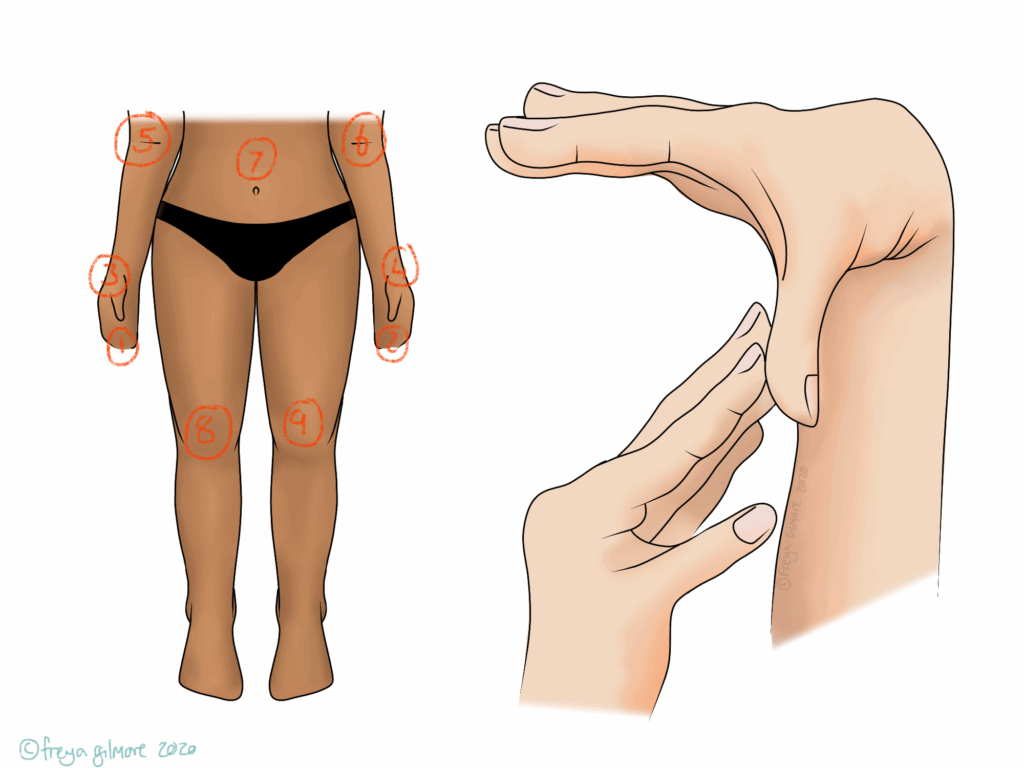When joints move further than we expect, we consider them to be hypermobile. There’s often not much reason why you have a hypermobile joint, or it might be due to injury or a connective tissue disorder.
Widespread Hypermobility
Some people are “just bendy”. Sometimes this comes down to bony anatomy, like being able to squat low with your feet in full contact with the floor. Other times, a joint’s mobility is dictated by its ligaments. You might naturally have ligaments that are more lax than the average, and if that causes you no issue, there’s nothing to worry about. You might find yourself drawn to exercises like yoga, where the flexibility comes in useful. However, if you’re very bendy, you need to know your limits to avoid over-stretching.
In comparison, connective tissue disorders, like h-EDS and Marfan Syndrome, come with degrees of hypermobility. We often see patients with EDS in clinic, as the widespread symptoms can cause a host of aches and pains. Women with EDS are more likely to suffer pelvic organ prolapse, so continued strengthening and a holistic approach are key. Self diagnosing a prolapse can be surprisingly difficult, so do speak to someone if you need guidance. Beverley may be able to help.
Hormonal changes, especially in pregnancy, impact ligaments too. From the first trimester, the body produces the hormone “relaxin”. Its job is to loosen off the ligaments in the pelvis to prepare for childbirth. Unfortunately, that destabilises the pelvis and can be a major factor in lower back pain in pregnancy.
Local Mobility Post-Injury
If you injure a joint, for example in a fall, sports injury, or road traffic accident, you might damage the ligaments. Ligaments are responsible for limiting a joint’s movement. Unfortunately, they are also slow to heal as they don’t have a good blood supply like muscles do. With or without rehabilitation, you can probably expect a bit more laxity through the joint post-injury. Good rehabilitation will:
- begin to load the joint at an appropriate time, encouraging better healing without causing more damage
- strengthen the muscles around the joint to support the ligament
- focus on achieving a full range of movement in all ranges
Managing Hypermobility
Osteopaths can use the Beighton Score to determine just how hypermobile someone is. This quick test involves seeing how far certain joints will bend. Nine joints are tested, labelled in the image above. The test is simple and definitely not 100% accurate, but it gives a good rough idea of someone’s flexibility. Lots of joints are missed, so the test won’t be considered in isolation. It can be especially helpful if we suspect you may have a connective tissue disorder that would benefit from further investigation, as we can drop it into a referral letter and the doctor will know exactly what it means.
The good news for management is that joints stiffen up as we get older; but it’s not just a waiting game. You can support your progress with strengthening in the first instance. Keeping the muscles around a mobile joint strong will help. Your osteopath can help to identify other areas that might be causing a problem. If a neighbouring area is stiff, the mobile area might need to do more work to compensate. Treating that second problem area should take some of the strain off an already overworked joint.
Click here to make an appointment for your pain in Umm Suqueim

